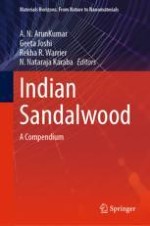2022 | OriginalPaper | Buchkapitel
12. Anatomy of Indian Sandalwood (Santalum album L.)
verfasst von : Satish Kumar Sinha, R. Vijendra Rao
Erschienen in: Indian Sandalwood
Verlag: Springer Nature Singapore
Aktivieren Sie unsere intelligente Suche, um passende Fachinhalte oder Patente zu finden.
Wählen Sie Textabschnitte aus um mit Künstlicher Intelligenz passenden Patente zu finden. powered by
Markieren Sie Textabschnitte, um KI-gestützt weitere passende Inhalte zu finden. powered by
